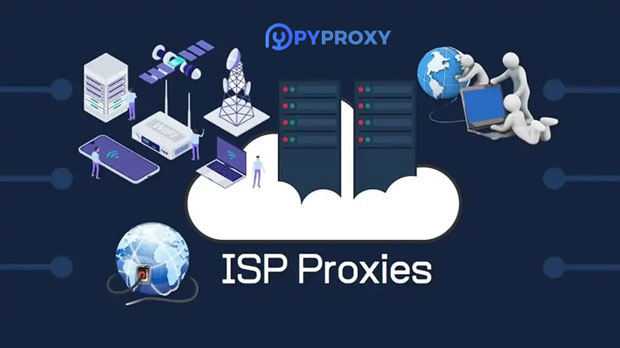In today’s digital world, many users are often restricted from accessing certain content due to geographical limitations. This is common on streaming services, news websites, and other digital platforms, where content is often tailored to specific regions. A popular method to bypass these regional restrictions is by using a socks5 proxy. By routing your internet traffic through a SOCKS5 server, users can appear to be accessing the internet from a different location, thus gaining access to region-locked content. In this article, we will explore what SOCKS5 is, how to configure it, and the steps you can take to use it to bypass these geographical barriers effectively. What is SOCKS5 and Why Use It?SOCKS5 (Socket Secure version 5) is a proxy protocol that routes network packets between a client and a server through an intermediary server, known as a proxy server. Unlike traditional HTTP proxies, SOCKS5 operates at a lower level of the networking stack, which means it can handle any type of traffic, including web traffic, email, and P2P file sharing, without being limited to specific applications.SOCKS5 allows for a high degree of privacy, security, and flexibility. The protocol supports authentication, meaning that only authorized users can connect to the proxy server. Moreover, unlike VPNs that tunnel all your traffic through an encrypted connection, socks5 proxies do not necessarily encrypt traffic, which results in faster speeds but with less privacy protection. This makes SOCKS5 an attractive option for users seeking to bypass regional content restrictions without sacrificing much performance.Understanding Regional Content RestrictionsContent restrictions are often set up by service providers to limit access to certain content based on the user’s location. For instance, a movie or TV show available in one country may be blocked in others due to licensing agreements. These restrictions are commonly enforced through IP geolocation, where the service provider determines a user’s location based on their IP address and blocks content accordingly.While these restrictions serve legal and commercial purposes, they can be frustrating for users who want unrestricted access to global content. Thankfully, technologies like SOCKS5 proxies allow users to mask their real IP address and simulate an IP address from a different region. This enables users to access content that would otherwise be unavailable in their geographical location.How to Set Up SOCKS5 for Bypassing Regional Content RestrictionsSetting up a SOCKS5 proxy to bypass regional content restrictions involves several key steps, from configuring the proxy settings in your browser or application to ensuring that the SOCKS5 server you use is reliable. Let’s walk through the essential steps involved in setting up SOCKS5.Step 1: Choose a SOCKS5 Proxy ProviderBefore you can set up a SOCKS5 proxy, you need to choose a reliable SOCKS5 proxy provider. This provider should offer servers in the region you wish to access content from. Ensure that the provider offers high-speed servers, minimal downtime, and good customer support in case any issues arise during setup.Step 2: Obtain SOCKS5 Proxy DetailsOnce you have selected a provider, you will need to acquire the SOCKS5 proxy details, including the IP address and port number. The provider may also provide a username and password for authentication if the server requires it. These details are essential for configuring the proxy settings.Step 3: Configure SOCKS5 Proxy in Your Browser or ApplicationThe next step is configuring the SOCKS5 proxy in your browser or application. Most modern web browsers and applications, including Google Chrome, Mozilla Firefox, and popular torrent clients, support SOCKS5 proxies.For Google Chrome or Mozilla Firefox, you will need to configure SOCKS5 settings manually in the network settings. Typically, you can navigate to the settings or preferences menu, find the “Network” or “Proxy” settings section, and enter the SOCKS5 proxy’s IP address, port number, and authentication credentials (if required).If you are using a specific application, such as a torrent client, check the application’s settings for proxy configuration options. This may be found in the preferences or connection settings. Enter the SOCKS5 proxy information and ensure that the application is set to route all traffic through the proxy server.Step 4: Verify Your ConnectionAfter configuring the SOCKS5 proxy in your browser or application, it’s important to verify that the setup is working as intended. The easiest way to check if the proxy is functioning correctly is to visit a website that shows your current IP address and location. You should see that your IP address reflects the location of the socks5 proxy server, not your actual location.If the proxy setup is working correctly, you should now be able to access region-restricted content from the location associated with the proxy server’s IP address.Step 5: Troubleshoot and Fine-TuneIn some cases, users may encounter issues with SOCKS5 proxies, such as slow speeds or connectivity problems. If you experience these issues, try the following steps:1. Check Server Load: If the proxy server is overloaded, speeds may slow down. Try selecting a different server or a server with less traffic.2. Test Different Ports: Some services may block specific ports. Try changing the port number to see if that resolves the issue.3. Enable or Disable Authentication: If the server requires authentication, double-check the username and password. If not, try connecting without authentication.4. Use a Different Protocol: In rare cases, you may need to experiment with different proxy protocols (such as HTTP or HTTPS) if SOCKS5 does not work with a particular application.Limitations of SOCKS5 for Bypassing Regional RestrictionsWhile SOCKS5 proxies are a powerful tool for bypassing regional content restrictions, they do have limitations. First, they do not provide encryption by default, which means that your data is not as secure as it would be when using a VPN. For privacy-sensitive users, this could be a concern.Additionally, some streaming services and websites are becoming increasingly adept at detecting and blocking proxy traffic. If you use a SOCKS5 proxy, you may occasionally run into issues where your access is blocked, even though the proxy is configured correctly.ConclusionUsing SOCKS5 proxies is an effective method for bypassing regional content restrictions, offering a high degree of flexibility and speed. By setting up a SOCKS5 proxy, users can access a wide range of content from different regions, making it an invaluable tool for streaming, browsing, and other online activities. However, it’s important to understand the limitations of SOCKS5 proxies, such as the lack of encryption and the potential for detection by service providers. Nonetheless, when used correctly, SOCKS5 is an excellent option for those looking to bypass geographic restrictions and enjoy unrestricted internet access.
Jan 14, 2025
![arrow]()




























































